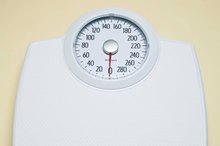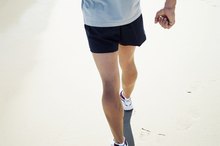What does fact checked mean?
At Healthfully, we strive to deliver objective content that is accurate and up-to-date. Our team periodically reviews articles in order to ensure content quality. The sources cited below consist of evidence from peer-reviewed journals, prominent medical organizations, academic associations, and government data.
The information contained on this site is for informational purposes only, and should not be used as a substitute for the advice of a professional health care provider. Please check with the appropriate physician regarding health questions and concerns. Although we strive to deliver accurate and up-to-date information, no guarantee to that effect is made.
Why Is Cardiovascular Endurance Used in Swimming?
An exercise is considered an endurance activity if it lasts at least 10 minutes. Swimming is no exception. As you breathe deep, kick your legs and forcefully move your arms, your cardiovascular system circulates blood and oxygen to fuel your working muscles against the water's resistance. Without a strong cardiovascular endurance system, your swim is cut short and you are left treading water.
Built for Speed
First, you determine if swimming is an aerobic exercise. Swimming fits the criteria of being an activity that is sustained, uses large muscle groups, lasts for 30 to 60 minutes and is performed three to five days a week. Your heart rate increases as your swimming speed increases and often may exceed the endurance-training zone. The way to remain within your endurance-training heart rate is to keep a pace at which you can carry on a conversation.
- First, you determine if swimming is an aerobic exercise.
- The way to remain within your endurance-training heart rate is to keep a pace at which you can carry on a conversation.
An Oxygen High
Why Is Swimming Good for Asthma?
Learn More
A tremendous amount of oxygen is required for endurance exercises. If you swim laps, you understand the need for oxygen to keep up with your elevated heart rate. At the endurance level, your body converts energy stores into usable fuel for your swim. A swimmer's body does this efficiently and has twice the endurance capacity of a sedentary person. This cardiovascular endurance is important to maintain the swim for 30 to 60 minutes.
- A tremendous amount of oxygen is required for endurance exercises.
- At the endurance level, your body converts energy stores into usable fuel for your swim.
Dare to Compare
Swimming burns a high number of calories, which is also a way to determine that it is an endurance exercise. A comparison of swimming and volleyball show the same number of calories burned during a 25-minute swim as an hour of playing volleyball. The Centers for Disease Control recommends two and a half hours a week of cardio exercises such as swimming to improve health and reduce risk of illness such as cardiovascular disease 2.
Swimming Benefits
The Ebbeling Treadmill Test
Learn More
According to the CDC, swimmers have half the risk of death compared to sedentary people. Death risks include cardiovascular diseases, high blood pressure and diabetes. Not only do you improve and use your cardiovascular endurance, you reduce your joint impact for a comfortable workout. Swimming is also used as a test for endurance fitness since it uses large muscles and creates intensity during the extended durations.
- According to the CDC, swimmers have half the risk of death compared to sedentary people.
- Not only do you improve and use your cardiovascular endurance, you reduce your joint impact for a comfortable workout.
Related Articles
References
- Cleveland Clinic: Heart and Vascular Health and Prevention
- Centers for Disease Control and Prevention: Health Benefits of Water-Based Exercise
- Essentials of Exercise Physiology; William D. McArdle, Frank I. Katch and Victor L. Katch
- National Institute of Diabetes and Digestive and Kidney Diseases. Diabetes, heart disease, and stroke. Updated February 2017.
- Mohr M, Nordsborg NB, Lindenskov A, et al. High-intensity intermittent swimming improves cardiovascular health status for women with mild hypertension. Biomed Res Int. 2014;2014:728289. doi:10.1155/2014/728289
- Wing RR, Lang W, Wadden TA, et al. Look AHEAD Research Group. Benefits of modest weight loss in improving cardiovascular risk factors in overweight and obese individuals with type 2 diabetes. Diabetes Care. 2011 Jul 1;34(7):1481-1486. doi:10.2337/dc10-2415
- Erickson ML, Jenkins NT, McCully KK. Exercise after you eat: Hitting the postprandial glucose target. Front Endocrinol (Lausanne). 2017;8:228. 2017 Sep 19. doi:10.3389/fendo.2017.00228
- Colberg SR, Sigal RJ, Yardley JE, et al. Physical activity/exercise and diabetes: a position statement of the American Diabetes Association. Diabetes Care. 2016;39(11):2065–2079.
- National Institute of Diabetes, Digestive, and Kidney Diseases. What I need to know about physical activity and diabetes. Updated December 2016.
Writer Bio
A mother of two and passionate fitness presenter, Lisa M. Wolfe had her first fitness article published in 2001. She is the author of six fitness books and holds an Associate of Arts in exercise science from Oakland Community College. When not writing, Wolfe is hula-hooping, kayaking, walking or cycling.









